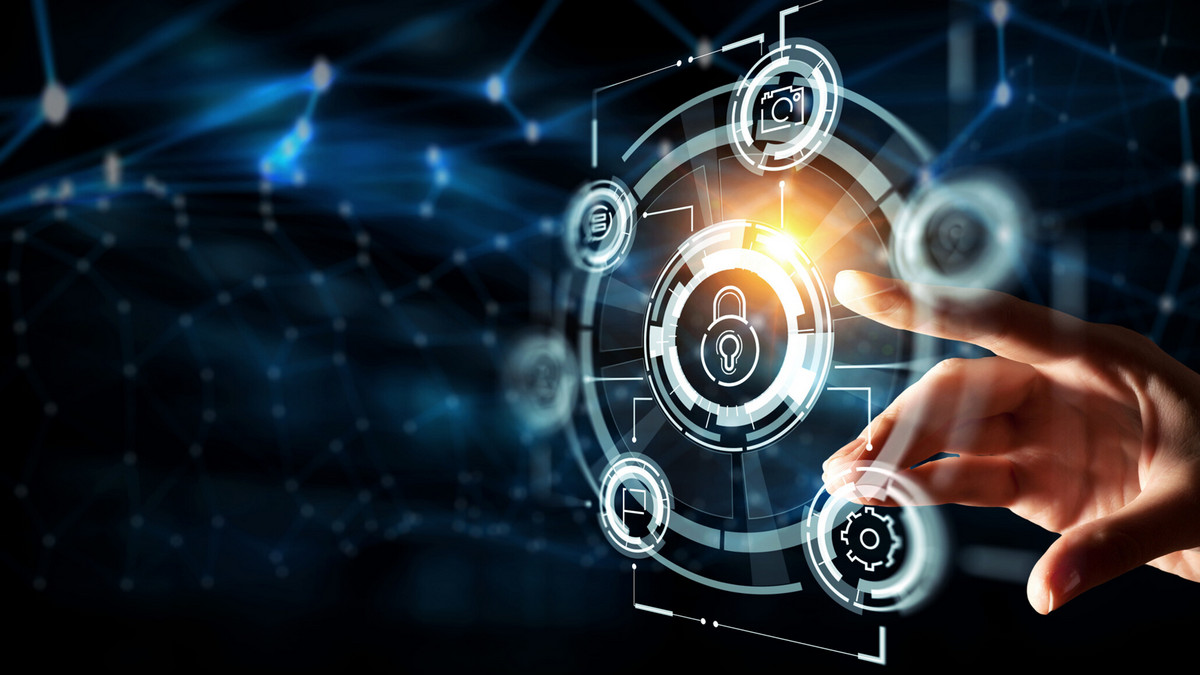When you chat with friends or family members using communication software, the information may be intercepted when transmitted on the Internet, thereby exposing the chat content. If the content contains confidential information, it may endanger privacy and security. End-to-end encryption (E2EE) is a method of protecting data that prevents potential eavesdroppers from monitoring data in transit.
Due to the popularity of mobile phones and portable devices, people can easily connect to the Internet anytime, anywhere, and there has been an explosive growth in the sharing and publishing of user-generated content by mobile phones and portable devices. People are alert to the illegal monitoring of sensitive personal and private communications, and they have begun to pay attention to personal information security, but how to effectively conduct secure communications? A reliable and auditable mechanism is needed to protect communications and important secrets.
The importance of communication confidentiality: Information protection is carried out through encryption technology to avoid information leakage or illegal use of information.
What is Encryption?
Encryption is the encryption of a message so that only a specific recipient can decode it. Encryption software converts your information into ciphertext, a sequence that humans cannot identify. Even if someone intercepts your message, the encrypted data cannot be decrypted unless you have the private key. The most used AES encryption algorithm is almost impossible to break. This technique uses a 256-bit key to generate various combinations, which currently cannot be cracked by even a supercomputer in a reasonable amount of time.
What Types of Encryptions are There?
Symmetric encryption:
Symmetric Encryption is where the sender and receiver use the same private key to encrypt and decrypt messages. This set of keys is shared between two or more members to maintain exclusive communication links. Symmetric encryption is faster, but the main disadvantage is that the key is shared by both parties. Unless a secure channel is established, keys can be intercepted and messages can be deciphered.
Asymmetric encryption:
Asymmetric Encryption uses a more advanced and secure method to protect data. It encrypts messages using two keys: a public key and a private key. The sender and receiver use the same public key and use different private keys, which means that neither side of the communication knows the other's private key.
In this case, only someone who has both the private key and the public key can decrypt the message. If a message is intercepted in transit by a malicious person, even if they have the public key, they will not be able to access the message. Only someone with a private key can decrypt the message. Although asymmetric encryption is more advanced than symmetric encryption, both the sender and receiver endpoints are not protected. If a hacker breaks into any device and steals both keys, they can get their hands on the data.
What is End-to-End Encryption?
End-to-end encryption is a communication system in which only the users involved in the communication can read the information. It prevents potential eavesdroppers, including telecommunication providers, Internet service providers, and providers of the communication system, from obtaining the clear text of the communication between the two parties. Such systems are designed to prevent potential surveillance or tampering attempts. Communication providers using end-to-end encryption cannot decrypt users' messages, let alone provide their customers' communications to authorities.
Encryption is carried out between the sender and the receiver; the encrypted state is maintained during the transmission of the message. Both the sender and receiver endpoints are not protected, so even if the transmission is encrypted. At best the communication between the client and the server is guaranteed to be protected. However, the operators on the server side (such as ISPs or cloud services) still have a chance to see your messages.
End-to-end encryption (E2EE or e2e) encrypts the message during the entire transmission process between two endpoints, keeps it encrypted when passing through the cloud server, and decrypts it only at the user end, so service providers, ISPs, or any third party. In other words, this technology ensures that only the user involved in the communication can read the message and prevents the message from being stolen in transit. Although a VPN does not use end-to-end encryption, it is safer to use a VPN when surfing the web because the VPN service encrypts traffic and changes IP addresses. This way, your traffic flows securely and privately through cloud servers.
Key exchange:
In an end-to-end encrypted system, the keys used for encryption and decryption must be mastered by, and only by, the parties involved in the communication. To achieve this, end-to-end encryption systems can encrypt data using a predetermined string of characters (a pre-shared key), or use the string to generate a one-time password for encryption. In addition, the parties involved in the communication can also establish a key through negotiation.
How to Use End-to-End Encryption?
Many applications or services support end-to-end encryption. It is recommended that you use software or services with end-to-end encryption and enable it for more secure communications. Especially when you process sensitive information such as banking or personal data online. End-to-end encryption plays an important role in secure instant messaging applications. Many instant messaging applications have built-in end-to-end encryption. However, some communication software does not have end-to-end encryption enabled by default and must be turned on manually.
In addition, end-to-end encryption can be used to protect email communications, as well as backup services and P2P services. Zero-knowledge encryption is more secure because it encrypts files and can only decrypt them on your device. The service provider cannot access this data, but if you forget your password or lose your device, you will never be able to access the data.
Possible threat
- End-to-end encryption cannot protect the client device, so hackers can obtain the public key or private key if they attack the client device. Alternatively, data can also be obtained via an app.
- Some chat systems may not be able to encrypt their backup data, you should ensure that the application fully implements end-to-end encryption.
- Backdoor attacks can bypass encryption technology. Such attacks can be carried out using Trojans, malware, or malicious code. As a result, hackers may plant malicious programs on your device and access data.
Pros and Cons of End-to-End Encryption:
Disadvantages of end-to-end encryption:
End-to-End Encryption for some, the value proposition of E2EE is problematic because no one can access your messages without the corresponding key. Opponents argue that criminals can safely use E2EE knowing that governments and tech companies cannot decrypt their communications. They support legislation that would allow them to access communications through a backdoor system. It is worth noting that applications using E2EE are not 100% secure. Messages are obfuscated as they pass from one device to another, but they are visible at the endpoint i.e., a laptop or smartphone on either side.
E2EE guarantees that no one can read your data during transmission. But other threats remain:
- Your device can be stolen: If you don't have your PIN or if an attacker bypasses it, they can access your messages.
- Your device may be affected: Your computer may have malware that monitors messages before and after sending them.
Another risk is that someone could intervene between you and the other party through a man-in-the-middle attack. If you are doing a key exchange, you are not sure that the other party is your friend. You may unknowingly establish a key with an attacker. The attacker then receives your message and they have the decryption key. They can trick your friends in the same way, that is, they can forward messages and read or modify them as they see fit. To address this, many applications integrate some type of secure code functionality. This is a string of numbers or a mobile barcode that can share with your contacts through a secure channel. If the numbers match, you can be sure that a third party is not snooping on your communications.
Advantages of end-to-end encryption:
In a setting without any of the above vulnerabilities, E2EE is undoubtedly a valuable resource for improving confidentiality and security. It's a technology embraced by privacy activists around the world and integrated into the apps we're used to using, meaning anyone with access to a phone can use it. It would be a mistake to view E2EE as a mechanism that is only useful to criminals and whistleblowers. It turns out that even the most secure-looking companies can be vulnerable to cyberattacks that expose unencrypted user information to malicious parties. Access to personal data such as sensitive communications or identification documents can have a catastrophic impact on an individual's life.
Technology Outlook
Despite these potential vulnerabilities, end-to-end encryption remains a solid technology for ensuring privacy and security. It is recommended to use applications with built-in end-to-end encryption whenever possible. End-to-end encryption ensures the security of transmitted data, and only the user involved in the communication can decrypt the message. But end-to-end encryption cannot avoid the security risks of the endpoint itself. There is still the possibility that the key has been stolen on the client device, or that the decrypted message can be read.














